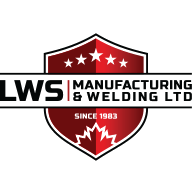Best Practices for Sanitary Welding
Sanitary welding is a critical process in industries such as food and beverage, pharmaceuticals, biotechnology, and cosmetics, where hygiene and purity are paramount. Adhering to best practices ensures the integrity, cleanliness, and safety of the finished product, whether welding stainless steel piping, tanks, or equipment. As a leading provider in the industry, LWS Manufacturing & Welding emphasizes the importance of maintaining a clean work environment throughout the welding process. That is why we have compiled some information on best practices for sanitary welding.
Learn how to prevent welding cracks.
Best Practices for Keeping Welding Clean and Safe
1. Thorough Surface Preparation and Cleaning
Sanitary welding demands a pristine working environment to prevent contamination and ensure product purity. Before welding, meticulously clean all surfaces, tools, and equipment to remove any dirt, oil, or grease. Utilize appropriate cleaning agents and procedures recommended for stainless steel surfaces to achieve a clean and hygienic welding environment. Thorough surface preparation sets the foundation for achieving high-quality, sanitary welds.
2. Selecting the Right Materials and Alloys
Opting for high-quality stainless steel materials suited for sanitary applications is paramount. Stainless steel alloys offer superior corrosion resistance and durability, making them ideal for critical hygiene environments. Make sure to avoid using materials with surface imperfections, defects, or incompatible alloys that could compromise weld integrity or contaminate the product. Choosing suitable materials will ensure the longevity and integrity of the welds.
3. Implementing Effective Purging Techniques
Purging is vital in achieving clean, oxide-free welds in sanitary applications. Utilize purge gas, typically argon or a blend of argon and CO2, to displace oxygen from the welding zone, preventing oxidation and ensuring a contamination-free weld. Employ techniques such as back purging or inert gas shielding to maintain an oxygen-free environment during welding, particularly in enclosed or confined spaces. Effective purging guarantees the integrity and purity of the welds.
4. Adhering to Precision Welding Methods
Employing precise welding techniques is crucial for achieving sanitary welds with minimal distortion and maximum integrity. TIG welding is preferred for sanitary applications due to its precise control over heat input and arc stability. Ensure proper fit-up, joint alignment, and weld preparation to achieve full penetration and uniform fusion across the weld joint. Precision welding techniques result in clean, high-quality welds that meet sanitary standards.
5. Rigorous Quality Control and Inspection Procedures
Implementing rigorous quality control measures throughout the welding process is essential to verify weld integrity and compliance with sanitary standards. Conduct visual inspections, dye penetrant, or radiographic testing to detect surface defects, discontinuities, or weld imperfections. Document welding parameters, procedures, and inspection results to ensure traceability and compliance with regulatory requirements. Rigorous quality control guarantees the reliability and safety of the welds.
If you have any questions regarding our welding services, please contact our team to learn more about our offerings and how we can assist you by filling out our online contact form.




